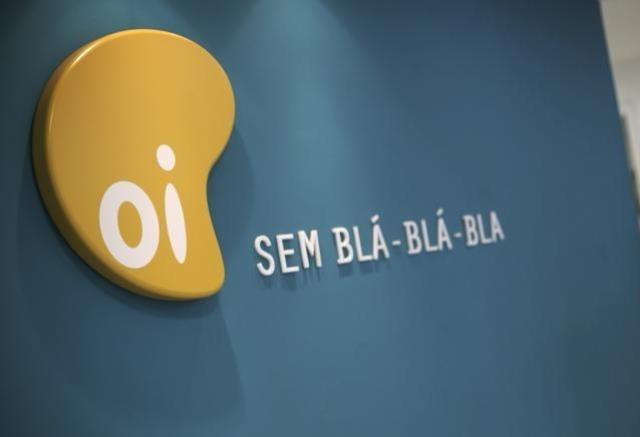Oi, the leading telecom operator in Brazil, will reduce its Capex to BRL 7 billion in 2020 as compared with BRL 7.8 billion in 2019.
 Oi aims to focus on the expansion of fiber network across Brazil. Oi’s Capex rose 29 percent in 2019. “Fiber continues to increase as a percentage of our Capex and will be the primary component for the next several years,” said Oi CEO Rodrigo Abreu said.
Oi aims to focus on the expansion of fiber network across Brazil. Oi’s Capex rose 29 percent in 2019. “Fiber continues to increase as a percentage of our Capex and will be the primary component for the next several years,” said Oi CEO Rodrigo Abreu said.
Oi CEO has expressed concerns on the need for regulatory related Capex on fiber networks to maintain payphones. Oi is forced to maintain central office switches that connect payphones, even in areas where it doesn’t make any sense in terms of returns.
Oi is already present in 2,200 cities with its fiber transmission network, covering roughly 55 million homes. This enables Oi’s engineers to significantly accelerate the FTTH deployment across Brazil.
“With our reuse model, we are able to be much more efficient in terms of time-to-market in new cities. We reached FTTH presence in 86 cities in the end of 2019, and plan to be in an additional 44 new cities in 2020, with presence in all states of the country, except for Sao Paulo as our strategic plan,” Rodrigo Abreu said.
Focus of Capex
Oi ended 4Q19 with 4,202 thousand fixed broadband RGUs in the Residential segment (–13.9 percent y.o.y. and –7.3 percent q.o.q.). The competition from regional players that offer broadband services in small towns outside major urban centers is the obstacle to broadband growth.
Oi has accelerated investments in fiber expansion, closing the quarter with 4.6 million homes passed with fiber (HPs), 1,014 thousand of which built in the fourth quarter of 2019. Oi aims to reach 16 million homes passed by the end of 2021. Oi closed 4Q19 with around 675 thousand homes connected (HCs) to fiber and a take-up rate of 14.7 percent.
Oi Fibra was present in 86 municipalities at the end of 4Q19 and 110 municipalities at the end of February 2020.The company reached 5.3 million HPs and over 849 thousand HCs in February, increasing the take-up rate to 16.1 percent. Oi currently has over 376 thousand kilometers of fiber in the country.
Oi’s 2G coverage reached 3,497 municipalities (93 percent of the country’s urban population) in 4Q19, while 3G coverage reached 1,645 municipalities, or 82 percent of the Brazilian urban population.
Oi’s 4G coverage reached 1,018 municipalities (+13 percent y.o.y.), or 75 percent of Brazil’s urban population. In addition, 4.5G coverage reached 44 municipalities, serving around 13 percent of the urban population.
Opex
Oi said operational efficiency and digitalization initiatives started producing cost savings. Oi managed to optimize all cost lines in fourth quarter 2019, except for marketing costs, with a BRL 19 million increase necessary to support growth, mainly in fiber and mobile.
Oi’s EBITDA reached BRL 4.51 billion in 2019 and BRL 1 billion in the quarter.
Oi simplified portfolio, reduced the legacy portfolio, and accelerated digital sales channels as part of the initiatives. This will have an impact in 2020 annualized numbers of between BRL 150 million and BRL 200 million a year.
Oi has kicked off different initiatives, including the implementation of CSC for common support functions across all companies. Oi has also started a supply chain efficiency project at the beginning of 2020 targeting significant results.
Oi started back office reductions through automation and extension of BPO contracts. Oi began many energy efficiency initiatives.
Oi has already reduced or interrupted most of IT legacy projects, and that had a rate of reduction of more than 50 percent in new IT projects over the last quarter, with significant cash savings.
Oi continued optimizing and decommissioning legacy networks on network and operations. The call volume including customer service reduced 20 percent, the percentage of digital invoices increased 14 percentage points, bad debt fell as a percentage of revenues, the energy costs that have been reduced, and the percentage of agile IT has increased significantly. The percentage of repairs by FTTH customer base fell. Fiber technical support through digital channels has increased.
Downloads of virtual technician through mobile app have increased by 200 percent, reaching levels of close to 200,000 downloads. The percentage of repeated technical cost continues to go down.
Oi reported revenues of R$ 4,914 million in 4Q19, down 8.4 percent from 4Q18 and 1.8 percent lower than in the previous quarter. Oi revenues from Brazilian operations came to R$ 4,862 million in 4Q19 (–8.6 percent y.o.y. and –1.9 percent q.o.q.), while net revenues from international operations (Africa and East Timor) totaled R$ 51 million (+6.9 percent y.o.y. and +10.9 percent q.o.q.).
In 2019, revenues totaled R$ 20,136 million, 8.7 percent down from 2018. Oi revenues from Brazilian operations amounted to R$ 19,949 million in 2019, 8.7 percent less than in 2018, while net revenues from international operations stood at R$ 187 million in 2019, 6.7 percent down from 2018.





